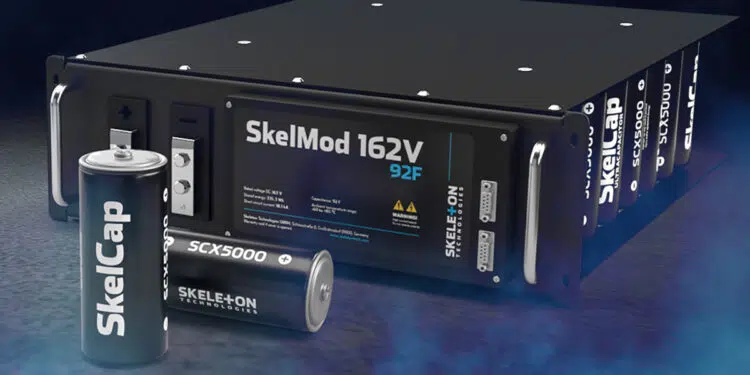Today, Skeleton Technologies is adding next-generation supercapacitors and modules to its portfolio.
- SkelCap SCX5000 cell (a large form factor cell, whose size is identical to our SkelCap SCA3200 cell)
- SkelMod 162V 92F module, the next-generation update to the popular SkelMod 102V module, used especially in grid and industrial applications
- SkelMod 54V 277F module, the next generation of the SkelMod 51V module
The supercapacitor cells and modules represent a huge jump in energy density, allowing our customers to downsize the energy storage, or increase the application lifetime.
As an example, the SCX5000, 3.0V cell offers 16 Wh/l, a 72% increase in energy compared to the SkelCap SCA3200 cell with the same form factor.
The low resistance of the cell results in less voltage drop and power loss, leading to a more efficient system, outperforming competing supercapacitors.
There has been no comparable single increase in supercapacitor energy density since the birth of the industry, as energy density for the past 20 years has stayed below 10 Wh/l.
The price-performance ratio allows targeting applications covered by the high-power segment of the battery market, like the cross-sectoral field of hybridization with lithium-ion batteries and fuel cells. It also allows longer application time and smaller volume for renewable/grid, industrial and transportation applications.































